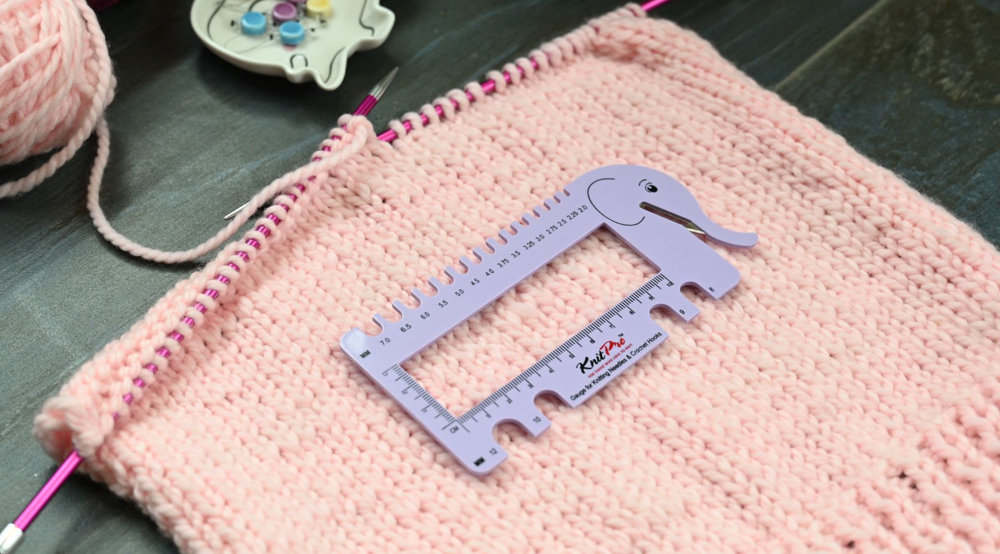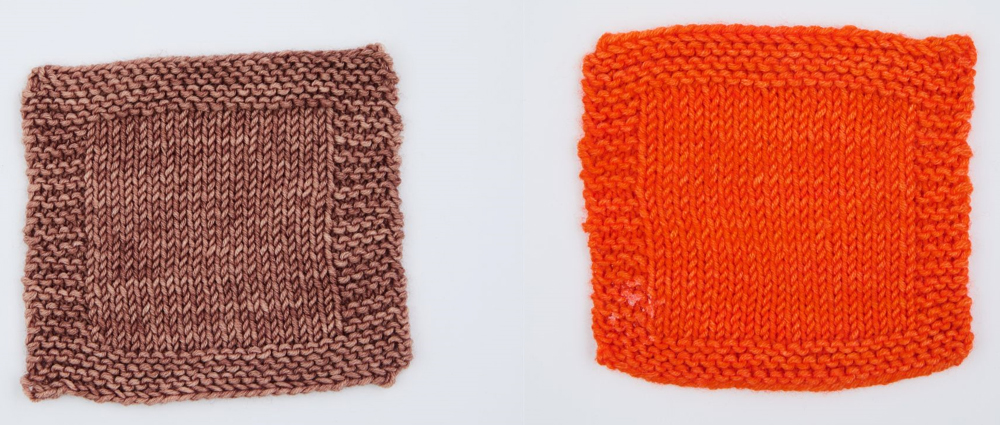Basic Tips and Techniques for New Knitters: A Guide for Yarn Lovers
- Blog Views : 1189
- Symfonie Yarns
- 11Sep, 2024

Knitting is more than just a yarn craft. It’s unraveling the potential of a skein of yarn and creating something special from scratch. It’s not just the rhythm of knitting needles but the flow of knitting yarn that makes the crafting a source of joy, mindfulness and expression of creativity. As a beginner, beautiful yarns often draw you in to pick up the needles but the technicalities of knitting can seem overwhelming. However, it is a craft that is easily learned with a little help and lots of practice. To help new knitters dive deep into the knitting world, this blog will guide you through basic tips and techniques. Are you ready? Let’s get started!
1. Choosing the Right Yarn for Your Project
Before you even pick up your knitting needles, the first step is choosing the right yarn for the project. For new knitters, this can be confusing due to the sheer variety of options available. Each yarn offers unique characteristics and understanding those can help you make better choices for your projects.
Yarn Weight: Yarn comes in different weights, from lace (almost hair-like) to bulky (rope-like). For beginners, a worsted-weight yarn is often recommended. It’s easy to work with, not too thin or thick, and produces results quickly. However, don’t hesitate to explore DK yarn, a versatile yarn weight that can be used for all kinds of projects.
Fiber Content: The fiber content of the yarn plays a significant role in choosing knitting yarn. Wool, especially merino wool yarn, is a fantastic choice for beginners. Soft, warm, and forgiving to work with. It’s ideal for projects like baby blankets, scarves, and sweaters.
One of the joys of knitting is working with beautiful, vibrant yarns. Hand dyeing allows for unique color variations that can add personality to your project. Symfonie Yarns offers a wide range of hand-dyed yarns, showcasing stunning semi-solid and variegated options that transform even the simplest stitches into eye-catching patterns. Whether you’re knitting socks, shawls, or sweaters, each yarn skein adds an element of artistry to your work.
For a better understanding, refer to our guide on choosing the best yarn for beginners.
2. Mastering the Basics
Once you’ve chosen your yarn, it’s time to get started. Understanding your knitting needles is essential. You can start with a pair of single-pointed needles. Circular needles offer great versatility in terms of knitting back and forth as well as in the round. Double-pointed needles are ideal for small circumferences. Choosing the right needles means choosing the right type, size and length.
With the right knitting needles, you will follow the basic steps while the pattern will differ.
Slip Knot: It is the first knot to connect the yarn to the needles.
Casting On: Creates the foundation row of stitches. There are several methods each with its own unique characteristics, but the longtail cast-on is a great choice for beginners.
Knit Stitch: The knit stitch is the first stitch you’ll learn. Insert the right needle into the first stitch on the left needle, wrap the yarn around the right needle, and pull it through to create a new stitch.
Purl Stitch: Essentially the reverse of the knit stitch. Instead of inserting the needle from front to back, you insert it from back to front.
Knitting comprises knit and purl stitches. The basic stockinette is a combination of knit and purl stitches in alternating rows. Once you learn how to knit and purl, you can work on any stitch pattern.
Bind Off: Similar to cast on, there are many ways to bind off the project. This step is essential for knitting projects as you take the stitches off the knitting needles and finish the project.
So, whenever you knit you will follow these steps. However, when you become a master you may forego the slip knot and explore advanced casting techniques.
3. Understanding Gauge
Gauge refers to the number of stitches and rows per inch in your knitting. For a project, particularly something that needs to fit (like a sweater or hat), gauge is critical.

As a new knitter, this is your guide. Before starting a project, knit a small swatch using the yarn and knitting needles you plan to use. This swatch gives an idea of how many stitches fit in an inch, how the pattern is turning out to be and the yardage needed to complete your project. Compare your swatch to the pattern’s gauge requirements. You may need to adjust your needle size if necessary.

Why It Matters? Getting the right gauge ensures that your project will come out the right size. This is particularly important for items like sweaters and hats where a small change in gauge can lead to a poor fit. For accessories like scarves and shawls, gauge is less critical, but it’s always good practice to check it.
4. Learning to Fix Mistakes
Mistakes happen, even to seasoned knitters. The key is knowing how to fix them without frustration. One of the most common mistakes for beginners is dropping a stitch. Don’t panic! Use your knitting needle, a crochet hook, or a repair hook to pick the stitch back up and place it onto your needle.
If you make a mistake in your pattern, you may need to “tink” (knit spelled backward) or “frog” (rip out your work). Tinking means unraveling one stitch at a time to correct an error, while frogging involves unraveling multiple rows. Both are valuable skills for correcting mistakes and saving your project.
5. Understanding Knitting Patterns
Patterns can feel like they’re written in code, but once you understand the terminology, they become easy to follow. Most knitting patterns use abbreviations, like K for knit, P for purl, YO for yarn over, and K2tog for knit two together. Familiarize yourself with these abbreviations before starting your project.
Some patterns, especially for lace or cables, come with charts that visually represent the stitches. These can seem intimidating at first, but with practice, you’ll find them a helpful tool for following complex patterns.
As a new knitter, remember that knitting is as much about the journey as it is about the finished project. Savor the joy of working with beautiful knitting yarn, the satisfaction of creating something with your hands, and the delight of learning new techniques.
With hand-dyed yarns, let your love for yarn guide your knitting. Symfonie Yarns offers a curated collection of yarns in fingering, DK and worsted weight in hand-dyed semisolid and variegated hues. Get ready to begin your knitting journey!
Also, make sure you read below related articles before you begin with your knitting project.
Related articles:
https://www.symfonieyarns.com/guide-to-yarn-substitution-for-your-knitting-projects
https://www.symfonieyarns.com/how-much-yarn-do-i-need-for-a-knitting-project
-
- 15 Dec,2025
-
- 08 Dec,2025
-
- 02 Dec,2025
-
- 27 Nov,2025
-
- 24 Nov,2025
-
- 19 Nov,2025
Copyright © Symfonie Yarns 2025 - all rights reserved | RSS Feed
